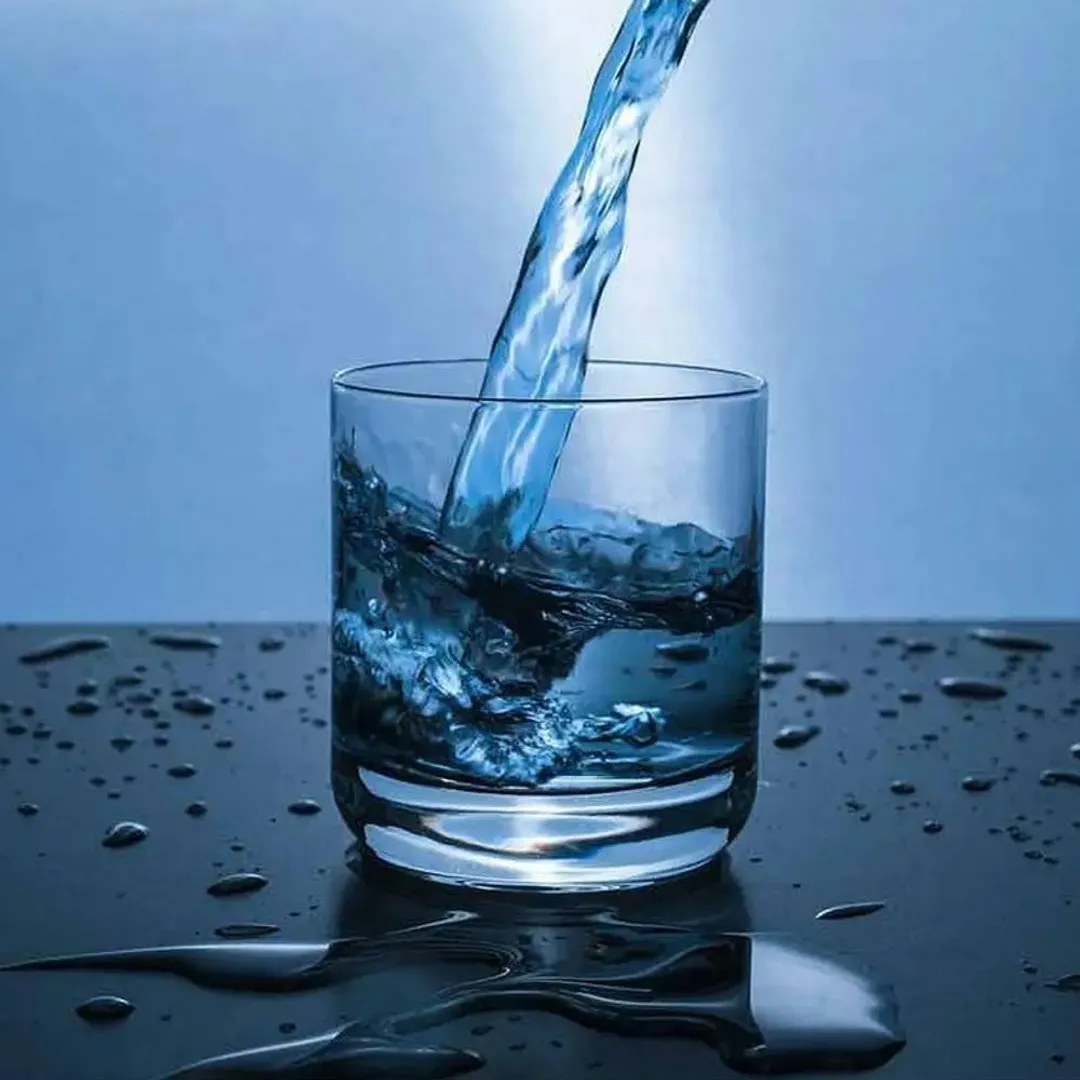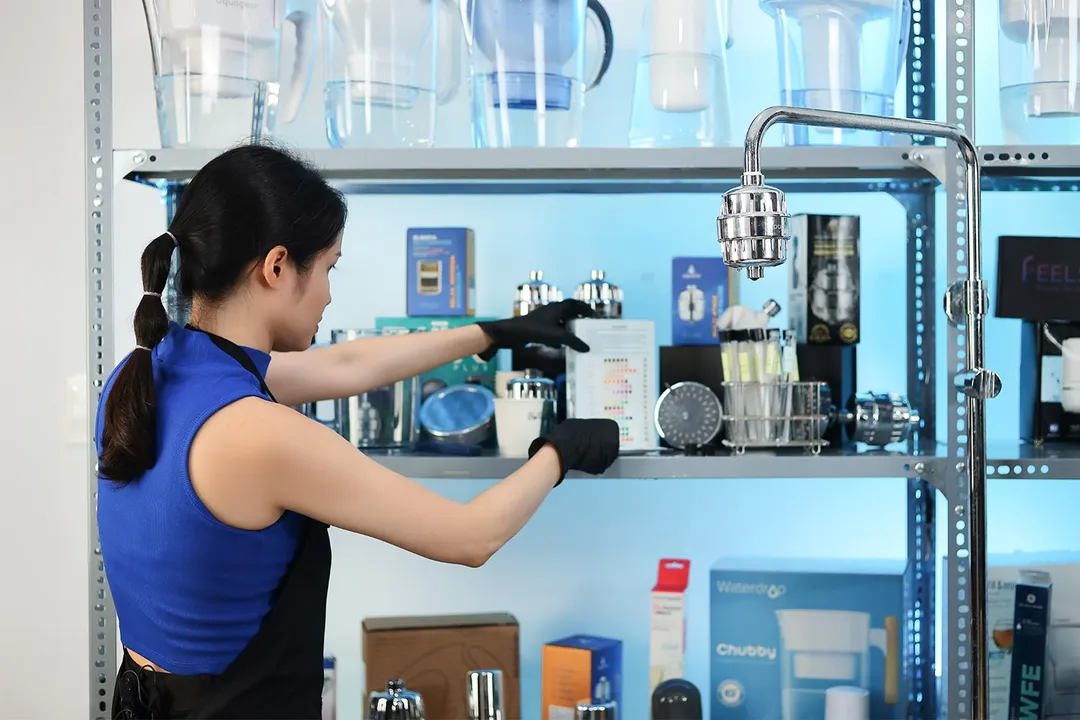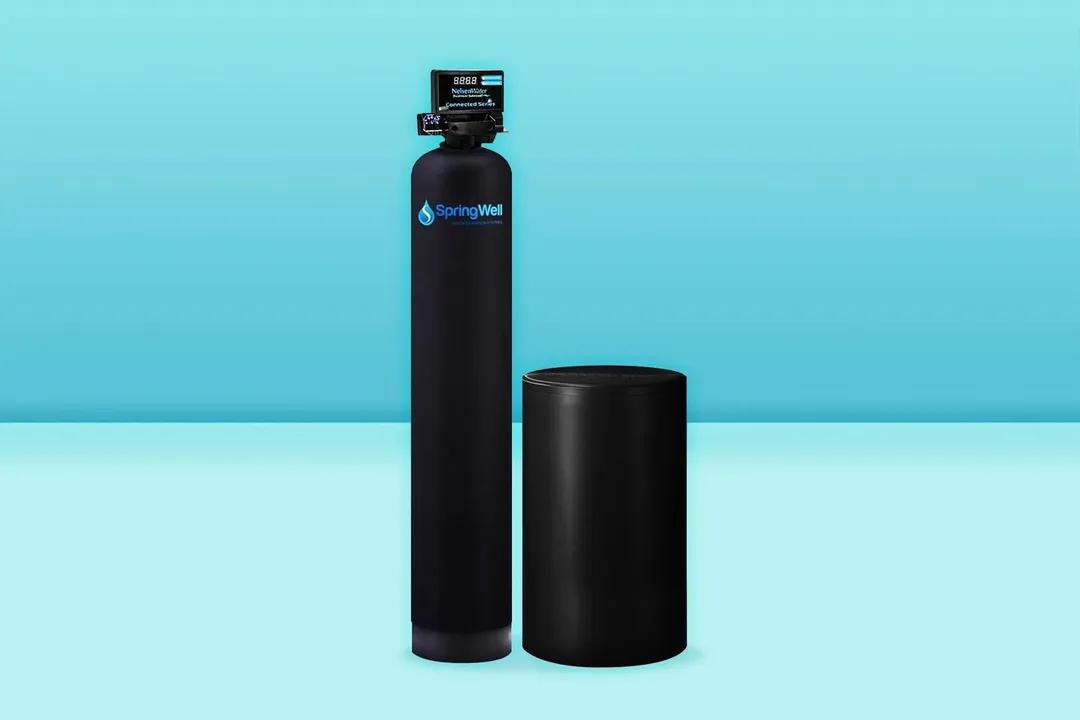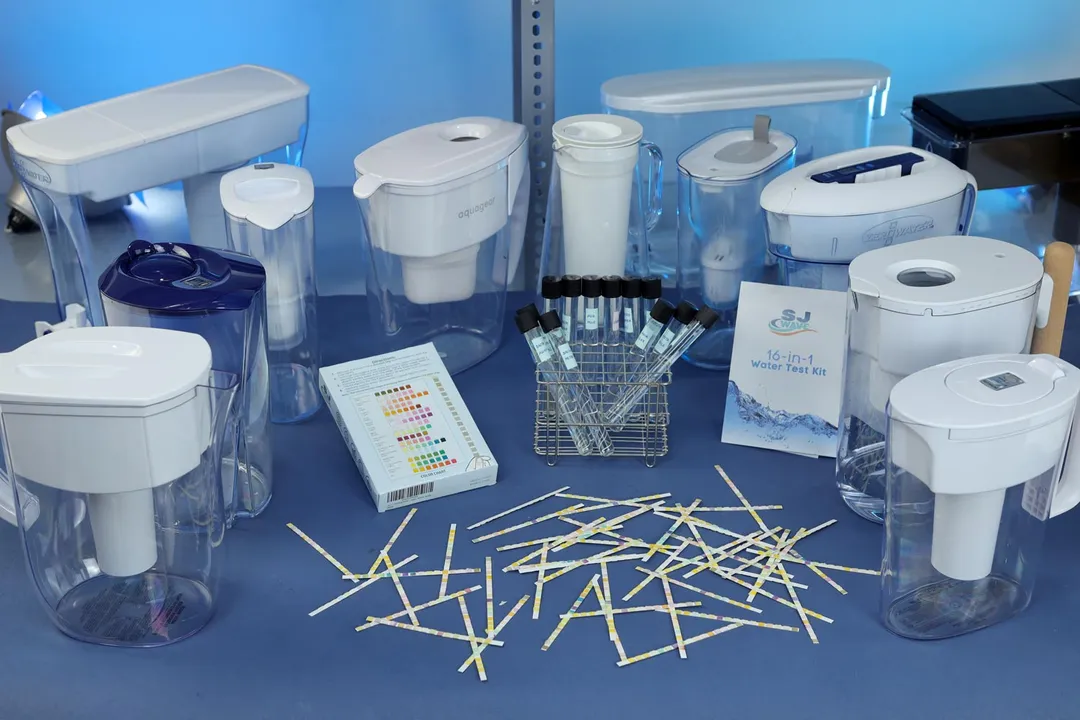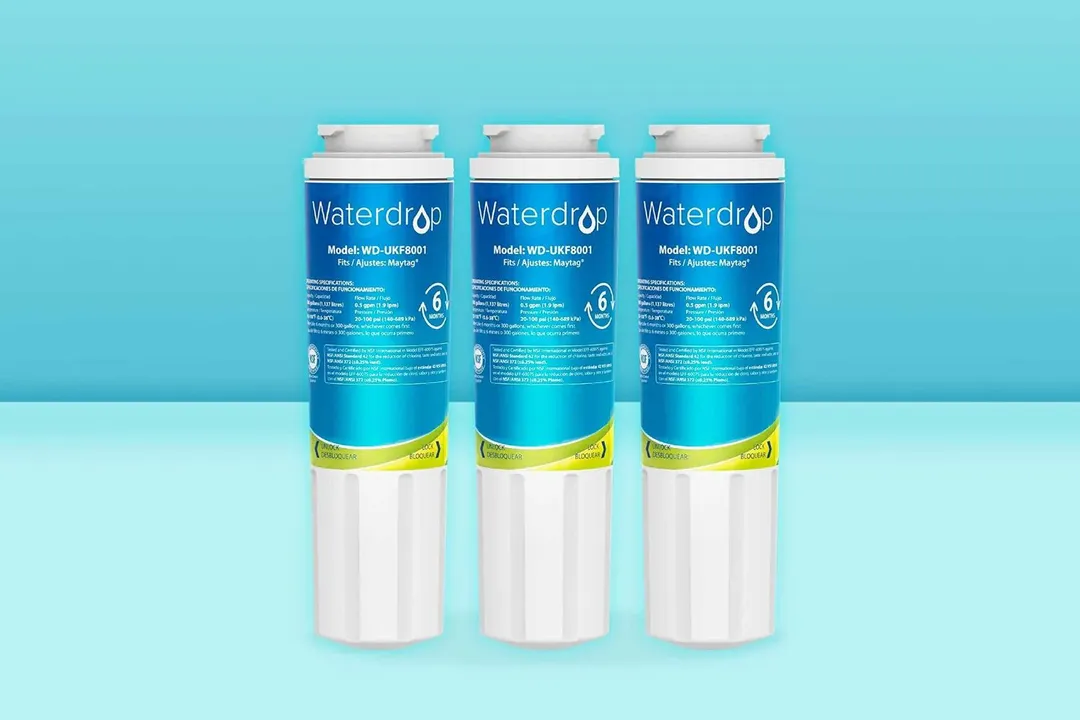Our recommendations are made independently through Research & Testing. We may receive commissions from purchases made via our links.
How to Choose the Right Water Softener for Your Home
Our step-by-step guide on how to pick the best water softener for your household.
Choosing a water softener for your home might seem like a daunting task, but it's a fantastic step towards making your daily life a bit more comfortable and your home a bit more welcoming. If you've noticed spots on your dishes, a film on your shower doors, or your skin and hair haven't been feeling their best, it might be time to tackle hard water head-on. Hard water, packed with minerals like calcium and magnesium, is likely the culprit behind these nuisances. By whisking away those pesky minerals, a water softener can help make your appliances last longer, your plumbing healthier, and your showers more luxurious.
In this friendly guide, we'll walk you through everything you need to know to pick the right water softener for your cozy nest. We'll cover how to figure out just how hard your water is, the size of the water softener you'll need to keep up with your family's water usage, and other things to keep in mind when buying a softener.
Determine How Hard Your Water Is
So you have all the symptoms of a hard water problem in your household. But how hard is the water you’re dealing with? There are three ways to find out.
The Easy Method: Estimation and Assumption
You may get a rough idea of how hard your water is from this US water hardness map, modified from the USGS’s concentration of hardness map.
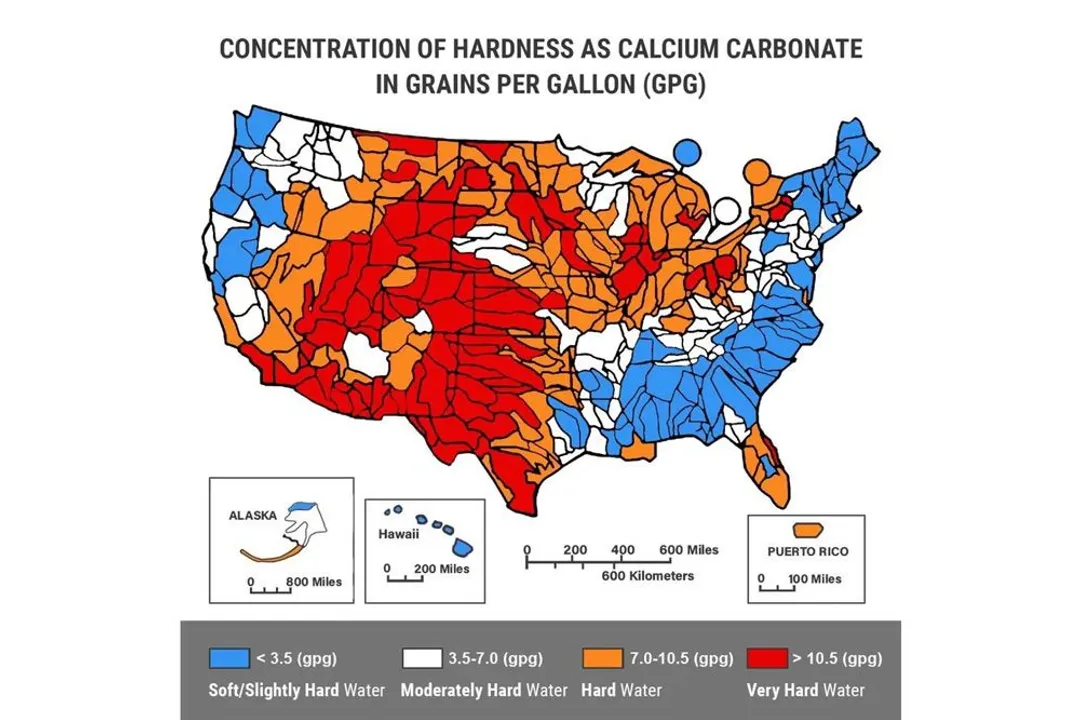
In areas marked white or blue in the map, water hardness may not be a problem. Water in these areas typically have TDS lower than 7 GPG, which is deemed soft or moderately hard. There is no need to soften it — the health benefits from an adequate amount of minerals most likely outweigh the risks of limescale buildup.
However, if you live in one of the areas marked orange or red, which is more than half of the US, it’s very likely that you have hard water that needs softening. The actual hardness may vary by city or municipality. Areas with high enough amounts of minerals in the water — TDS equal to, or greater than 7 — may be in trouble.
The Accurate Method: Testing with a Device
The estimation method may be convenient, but it’s based on a study conducted on large geographic regions from four decades ago and is not totally reliable. For more precise results, you might want to get a testing kit, also known as a TDS (total dissolved solids) meter.
These handy tools are very popular in households with individuals who want better control over the various kinds of water used in their houses, whether it’s drinking water or water intended to fill a fish tank.
More often than not, the hardness level will be expressed only in ppm or mg/L on your device. In case you want the results in grains, here’s the formula for conversion:
Hardness in grains = hardness in parts per million/17.1
For example, if the mineral concentration is 190 ppm, your water hardness level would be 190/17.1 = 11.1 (very hard).
The Professional Method: Complete Lab Analysis
For the ultimate accuracy, it’s best to send the water to a certified professional lab for a full composition analysis.
The lab test results will not only be useful for determining the hardness level of your water. It will also identify the specific elements that contribute to it. It will also reveal if there are any other substances or microorganisms in the water you may need to beware of, such as lead or pathogenic bacteria.
This information is essential if you’re planning to set up a water treatment system to address the exact elements that might be causing trouble in your home water. It may be the deciding factor when determining if and what kind of softener/filters you need in the system.
What Size of Water Softener Do You Need? Determining the Grain
A water softening system is installed at the point of entry— the point where water first enters your home. Therefore, the size of the softener should take your household’s daily water usage into account.
When calculating the capacity, you should also consider the time length between regenerations. Regeneration is the process when the minerals attached to the resin bed via ion exchange are washed off, leaving space for new salt to start softening the water again. Ideally, regeneration should be set to occur no more than once every three days and no less than every two weeks.
The reason you don’t want very frequent regenerations is that the backwash does involve wasting some water depending on the size of the softener. Additionally, the process typically takes an hour or two at a time, during which you will have no soft water.
On the other hand, it’s ill-advised to go more than two weeks between regenerations, even if your system is a high-grain water softener. If you wait too long, a foul smell from the minerals, especially iron, is sure to emerge.
Usually, the capacity of a salt-based water softening system is expressed in grains. The grain figure indicates the amount of grains in hard water it can handle in a cycle. The higher the grain, the higher the capacity.
With all that explained, here’s a good formula you can use to determine your softener capacity:
Capacity = Number of People (+1 for appliances) x Hardness Level x 82 Gallons x Days between Regenerations
Notes:
- The formula is adjusted from one suggested by the City of St. Charles. We changed the amount of water used per day by one person to 82 gallons to better reflect current estimates. Actual mileage may vary, so feel free to adjust the number accordingly.
- The unit of hardness in this formula must be in grains per gallon. Add 5 grains for every part per million of dissolved iron detected.
Example:
For a family of four, with hardness level being 9 gpg, and a 7-day-regeneration cycle, the minimum softener capacity should be
(4+1) x 9 x 82 x 7 = 25,830 grains.
If the water has iron at 1.5 ppm, the minimum softener capacity should be
(4+1) x (9 + 5 x 1.5) x 82 x 7 = 47,355 grains.
Know Your Budget – How Much Should Your Water Softener Cost?
A residential water softener can cost anywhere between $500 and $2500. Higher-grain water softeners tend to be more expensive than low-grain ones. When calculating the overall cost, you’ll want to factor in monthly maintenance costs by adding $5–$10 for the average 40 lbs of softening salt (or more if you’re using potassium instead of sodium). Also, don’t forget to include the cost of wastewater during backwashes (3 gallons per minute, which translates to 960–1080 gallons per month for a 7-day cycle).
With installation and maintenance costs taken into account, a salt-based softening system is usually slightly tougher on the wallet than a descaler. For those on a particularly tight budget, the descaler might look like the better option.
However, if you have extremely hard water that’s affecting your appliances, it’s better to go for a salt-based softener. When you consider the fact that it will extend the lifespan of your appliances, it’s not necessarily the more expensive choice.
Check for Important Certifications and Extra Features
Apart from type, size, and price, there are other features to look for when buying a water softener:
- Crosslink figure
- Certifications
- Automatic features
“Cross link resin”, or S/DVB, in the world of softeners, means a resin that is made from styrene and cross-linked with divinyl benzene.
Cross-linking can get a bit complicated if you dive into the nitty-gritty, but suffice it to say that the number of crosslinks affects the plastic density of the resin in the basin of a salt-based water softener. A higher crosslink means the resin is more resistant to both oxidation and physical damage.
Most softening resins in the US are 8% crosslink, but a few systems (some of which are in our review list) come with a 10% crosslink resin. While the difference may not seem like a lot, it can mean years of extended life for the resin. This is especially true if you’re dealing with chlorinated water, which is known to be very damaging to the crosslinks.
Certifications indicate that a water softener is certified to remove certain elements. Of course, this doesn’t ensure an absolutely error-free experience. However, certifications mean the device has proved to be effective to the industry standards through rigorous testing.
Likewise, it’s an indicator for high quality if a softener has a Gold Seal from the Water Quality Association (WQA). This means the softener has passed the strict requirements of industry standards and annual manufacturing facility audits. This should give you some confidence in the quality, durability, and safety of the product.
Automatic features can add a major convenience factor to your water softener. Some modern salt-based softeners can add salt on their own, or notify you when the salt is running low. That saves you from being kept wondering whether it’s time to get a little maintenance work done.
About your tip
Anh Ngo is a writer with 9 years experience at different media outlets, covering from public news and events to product testing and analysis. At HealthyKitchen101, she works across different departments, communicating closely with its network of writers, editors, and health, tech, and search engine experts to provide a meaningful and pleasant reading experience for visitors.


